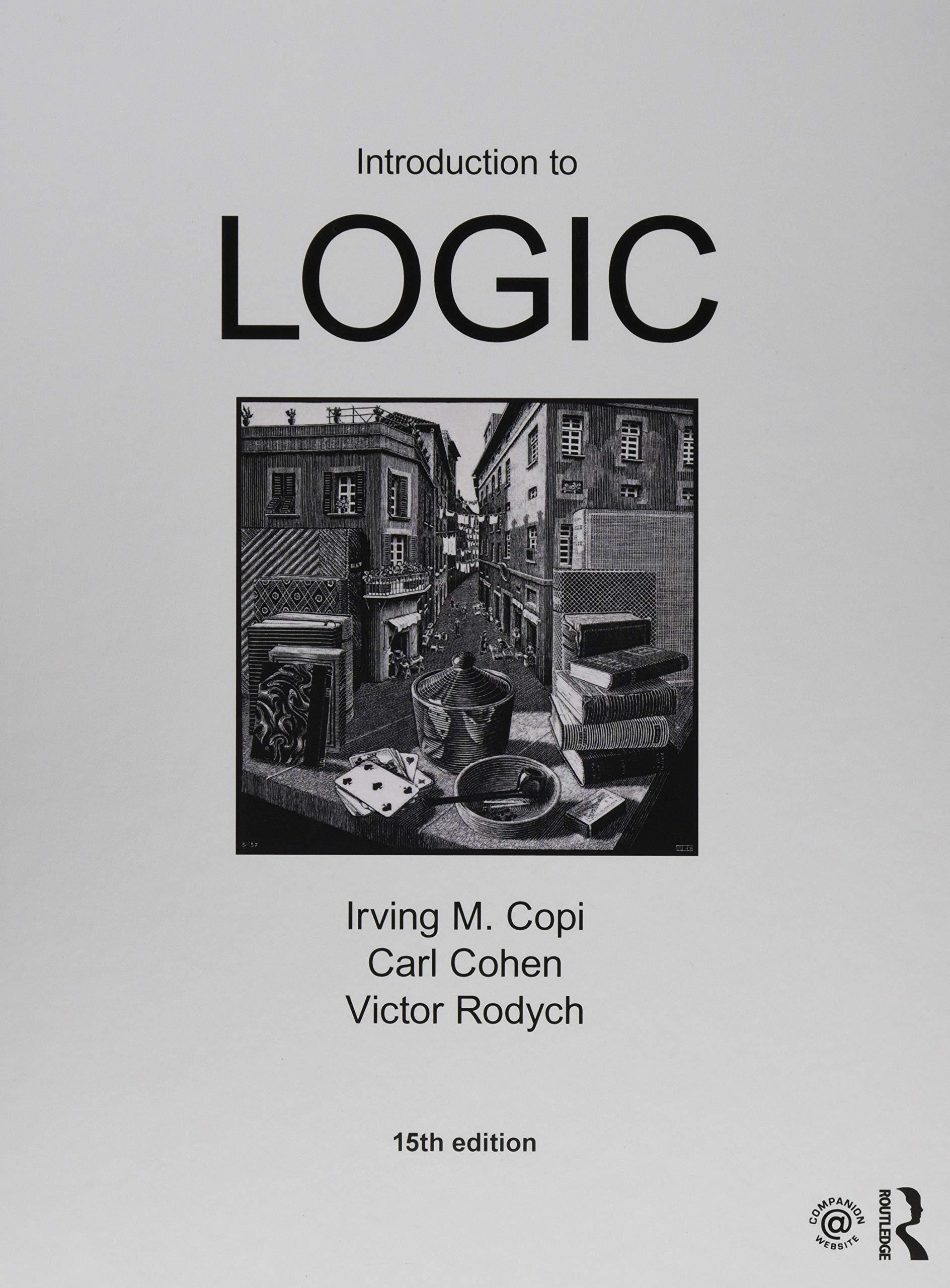Each of the following arguments in English may be similarly translated, and for each, a formal proof
Question:
Each of the following arguments in English may be similarly translated, and for each, a formal proof of validity (using only the nine elementary valid argument forms as rules of inference) may be constructed. These proofs vary in length, some requiring a sequence of thirteen statements (including the premises) to complete the formal proofs. The suggested abbreviations should be used for the sake of clarity. Bear in mind that, as one proceeds to produce a formal proof of an argument presented in a natural language, it is of the utmost importance that the translation into symbolic notation of the statements appearing discursively in the argument be perfectly accurate ; if it is not, one will be working with an argument that is different from the original one, and in that case any proof devised will be useless, being not applicable to the original argument.
If Mr. Smith is the manager’s next-door neighbor, then Mr. Smith lives halfway between Detroit and Chicago. If Mr. Smith lives halfway between Detroit and Chicago, then he does not live in Chicago. Mr. Smith is the manager’s next-door neighbor. If Mr. Robinson lives in Detroit, then he does not live in Chicago. Mr. Robinson lives in Detroit. Mr. Smith lives in Chicago or else either Mr. Robinson or Mr. Jones lives in Chicago. If Mr. Jones lives in Chicago, then the manager is Jones. Therefore the manager is Jones. ( S —Mr. Smith is the manager’s next-door neighbor; W —Mr. Smith lives halfway between Detroit and Chicago; L —Mr. Smith lives in Chicago; D —Mr. Robinson lives in Detroit; I —Mr. Robinson lives in Chicago; C —Mr. Jones lives in Chicago; B —The manager is Jones.)
Step by Step Answer:

Introduction To Logic
ISBN: 9781138500860
15th Edition
Authors: Irving M. Copi, Carl Cohen, Victor Rodych





